How Long Does a Commercial Roof Last in Alberta?
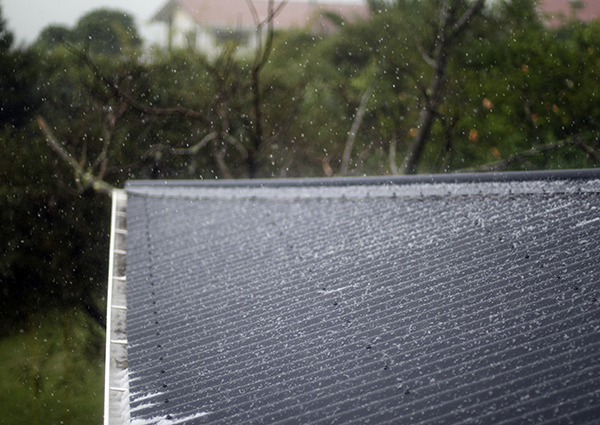 A commercial roof is such a significant investment for a business. So, a prime concern is always durability: how long will a commercial roof last?
A commercial roof is such a significant investment for a business. So, a prime concern is always durability: how long will a commercial roof last?
10 years? 25 years? 70 years?
No business wants to repair or replace a roof more often than absolutely necessary. But how do different materials compare?
And are there factors other than materials that affect the longevity of a roof?
As we all know, the Alberta climate is harsh on any building but how long should a commercial roof last here?
All these questions are answered below.
Factors that affect a roof’s longevity in Alberta
Consider each of the following factors before deciding on a commercial roofing design as they all affect the durability of your roof:
Weather
Weatherproof material should be high on the list of priorities when deciding on the type of commercial roof to install.
The weather in Alberta is harsher on buildings and roofs than other parts of Canada.
The freezing winter temperatures, humid summers, hail, snow, ice, wind, and storms all exert wear and tear on a roof and impact longevity unless you choose materials that are designed to withstand these extremes.
In particular, in our location, hailstorms and the freezing and thawing of water can create great problems. When moisture seeps into gaps and refreezes, the expansion can create cracks and leaks.
The style/pitch of the roof
Commercial roofs may be flat, low-sloped, steeper-sloped or standing seam architectural style.
Architectural standing seam roofs are especially hardy in windy areas although that’s not too much of a problem in Calgary and Edmonton, usually.
One of the major agents of damage to a roof is water. A low-sloped roof is generally more effective in allowing water runoff than a flat roof, all other things being equal.
There may be a problem on low-slope roofs when snow accumulates, in which case a steep-slope roof may be more effective (and prevents debris accumulating). However, bear in mind that in windy conditions, high-slope roofs are not a good option.
Commercial flat roofs may be the most cost-effective and easiest to install but water pooling can occur and drainage problems are relatively common. When water is not able to flow off the roof, it finds the lowest point and remains there until it evaporates. This can cause leaks and damage to your roof
REQUEST A CONSULTATION
Do you see how complex the relationship between roof pitch and climate can be?
Installation
How is your commercial roof going to be installed?
If mistakes are made through poor workmanship during the installation process, this can lead to problems, damage, and a shorter life.
For instance, with a metal roof, cutting corners with a lack of fasteners to secure the roof can create major problems in stormy conditions.
A professional roofing installation company will employ best-practice installation techniques so that your roof lasts the distance. Always choose qualified installers like United Roofing Inc.
Ventilation
Adequate ventilation is essential for maintaining a healthy roof.
For commercial roofs, direct sunlight, excess moisture, and heat can degrade materials with rot and other damage.
Your United Roofing consultant will assess the ventilation requirements of your building based on local knowledge and experience in similar commercial roofing environments in Calgary and/or Edmonton.
Maintenance
Your commercial roof is a major investment so even a so-called “maintenance-free” roof should undergo a regular check-up – at least once a year.
This allows your roofing company to check for damage and repair problems before they become major issues and shorten the life of your roof.
How do the different commercial roofing materials compare in durability?
From metal roofs to various types of the membrane and built-up roofing, you’ll see different commercial roofing solutions dotted across the Calgary and Edmonton landscapes.
The lifespan of a roof ranges anywhere from 15 to 75 years. But which roofing material best stands the test of time?
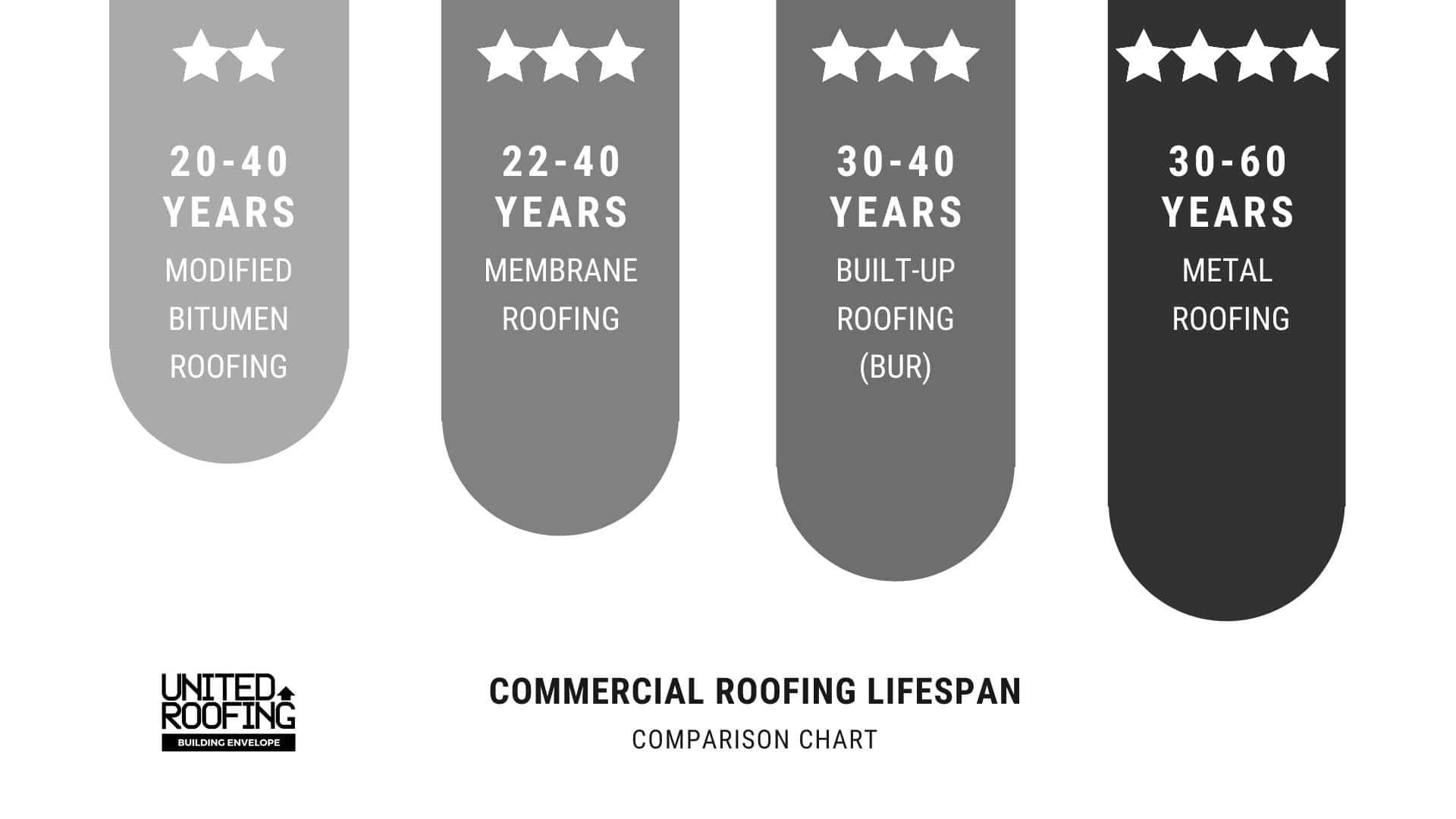
Metal Roofing
Metal is one of the most popular commercial roofing materials in Calgary and you will see it used widely on flat roofs.
Flat roofs aren’t entirely flat but may still suffer from poor run-off. The other major threat to a metal roof is that, despite being strong and durable, they are susceptible to rust as well as wind and hail damage in Alberta.
How long do they last?
You can prolong the life of a metal roof with protective surface layers, ensuring that with good maintenance your roof should last 30-60 years or more.
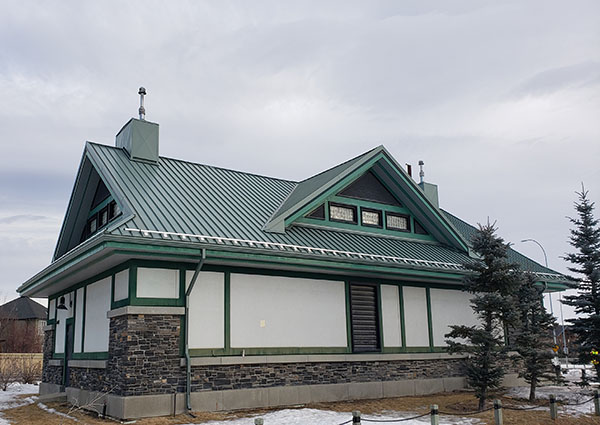
Built-Up Roofing (BUR)
Built-up roofing (BUR) involves building layers of tar or asphalt and roofing felt over the insulation board. Gravel is usually spread on the top.
It is most commonly used on commercial flat roofs or low-slope designs, such as retail centres, office towers or apartment buildings.
BUR provides a tough and weather-resistant surface that is well-suited to Calgary and Edmonton climates.
How long do they last?
Built-up commercial roofing should last in the vicinity of 30-45 years.
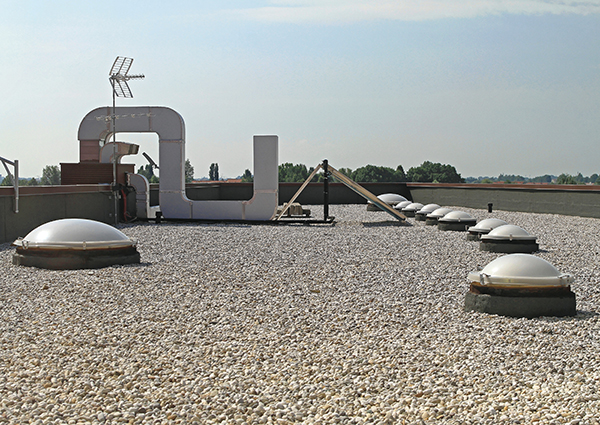
Membrane Roofing
Single-ply membrane roofing has become common for commercial buildings in Calgary and Edmonton.
It offers protective properties against the climate and medium-to-long-range longevity.
This roofing material comes in several forms, including a single or double-layered membrane. This is fixed in place using glue over the insulation board and may sometimes be loosely laid and topped with rock or paves.
It is used on flat and low-slope roofs only. The main threat to longevity is the membrane developing holes or puncturing.
The membrane itself is usually made from one of the following synthetic rubber or plastic formulations:
- EPDM (Ethylene Propylene Diene Monomer)
- TPO (Thermoplastic Polyolefin)
- PVC (Polyvinyl Chloride)
How long do they last?
If well cared for, single-ply EPDM, TPO, and PVC membrane roofs can generally last in the region of 22-35 years plus (you may hear people talk in terms of 40 years or more).
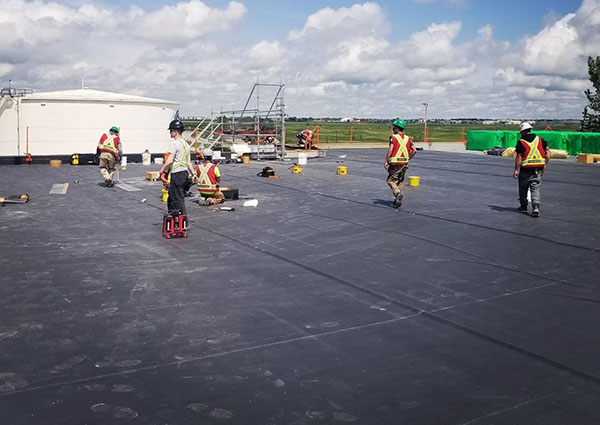
Modified Bitumen Roofing
Bitumen laid on top of reinforced roof fabrics and cut and installed in layers is another way to finish roofs for commercial buildings in Alberta.
They are generally two-ply systems, with the bitumen adhering to the roofing deck for extra stability.
The longevity of these roofs is confirmed by their presence in Calgary and Edmonton for decades, even on roofs with a high amount of foot traffic.
The technology behind modified bitumen has improved over the years and it provides a strong and low-maintenance commercial roof solution.
How long do they last?
A modified bitumen commercial roof should last a minimum of 20 years and around 30-40 years is more likely if you take good care of it.
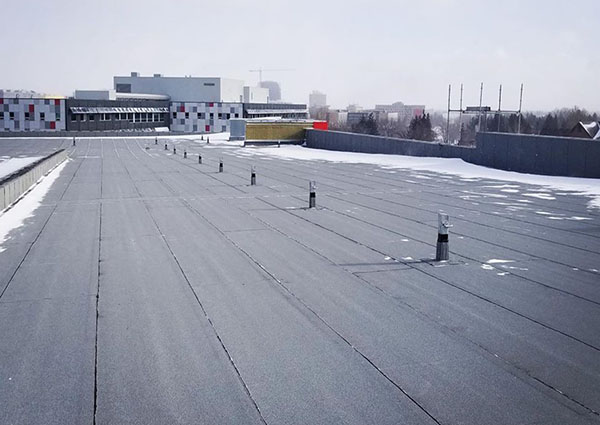
Longer Lasting Commercial Roofs
You can prolong the life of a commercial roof by:
- Getting the right advice before you decide on your roof type and materials
Installing it properly with a reputable company
Introducing a roofing maintenance program to check for damage and repair problems before they grow into more serious issues
